Health sports - a good combination of physical activity for course participants with deafblindness and varied practice for interpreting students.
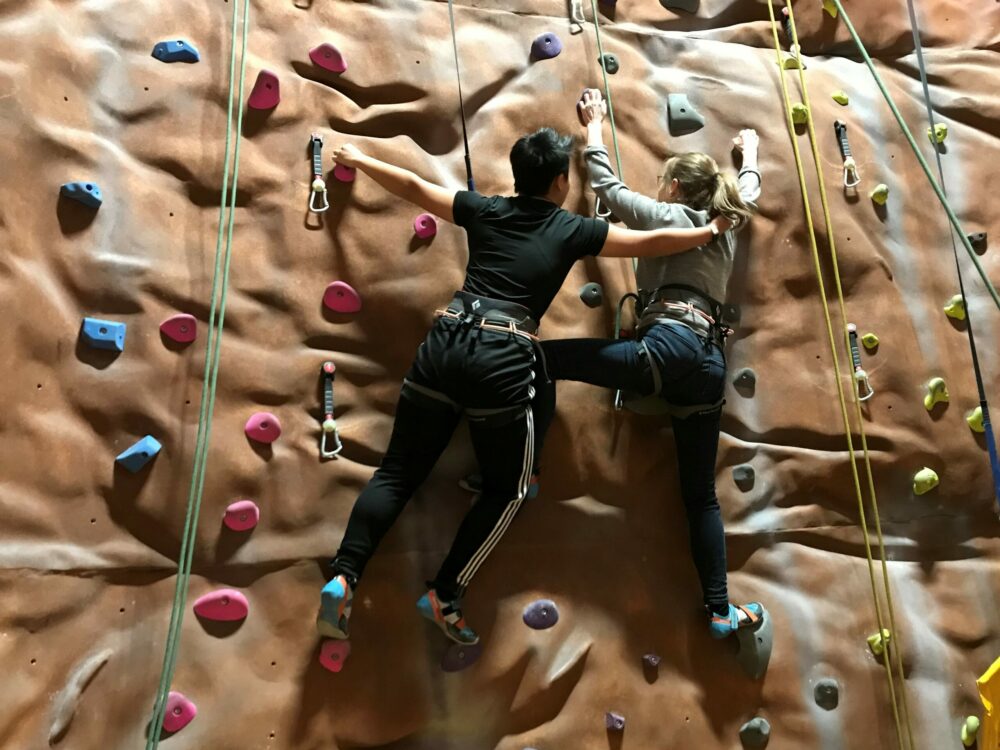
- "This week has been educational, challenging and fun," says Tina Yumin Sjølie, a third-year interpreting student at Western Norway University of Applied Sciences. She is one of the interpreting students who had an internship at Eikholt this autumn. One of the snapshots of her from this week was when she was hanging high up in the climbing wall together with participant Tonje Wright, while she described with haptic signals where the next roof for the climb was. "If I don't get good enough haptics, my results in the activities will be poorer," says Tonje. That's why it's important for students to learn to interpret and give haptic signals in different activities.
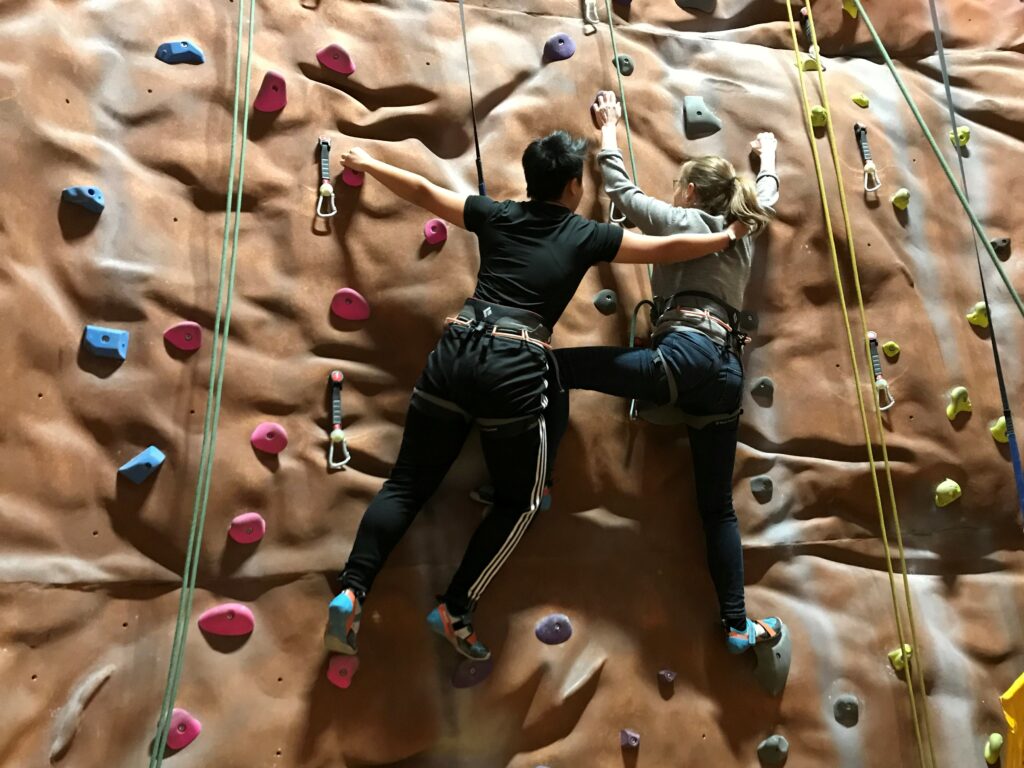
"For the course participants, the goal is to have a week with a lot of physical activity. We want to facilitate activities that many have not tried before," says Eikholt's course catalogue, "For the interpreter students, the goal is to become skilled interpreters/companions through a good and varied practical week."
-"It's incredibly important for deafblind people to get out in physical activities. It's so easy to sit at home if they don't have a supportive hand outsays Tonje Wright, who often uses an interpreter herself. "I took part in these days because I think it's important that interpreting students are exposed to different forms of interpreting, escorting and haptic communication in many different activities.
Helsesport is an activity week for deafblind people and an internship week for all interpreting students in Norway. It takes place over two weeks in the autumn, with the same programme both weeks. Over the years, the activities have included chess, running courses, yoga, hiking days, strength and balance training, bowling, dance, crossfit and cycling. In addition, there are various lectures.
This year the activities consisted of:
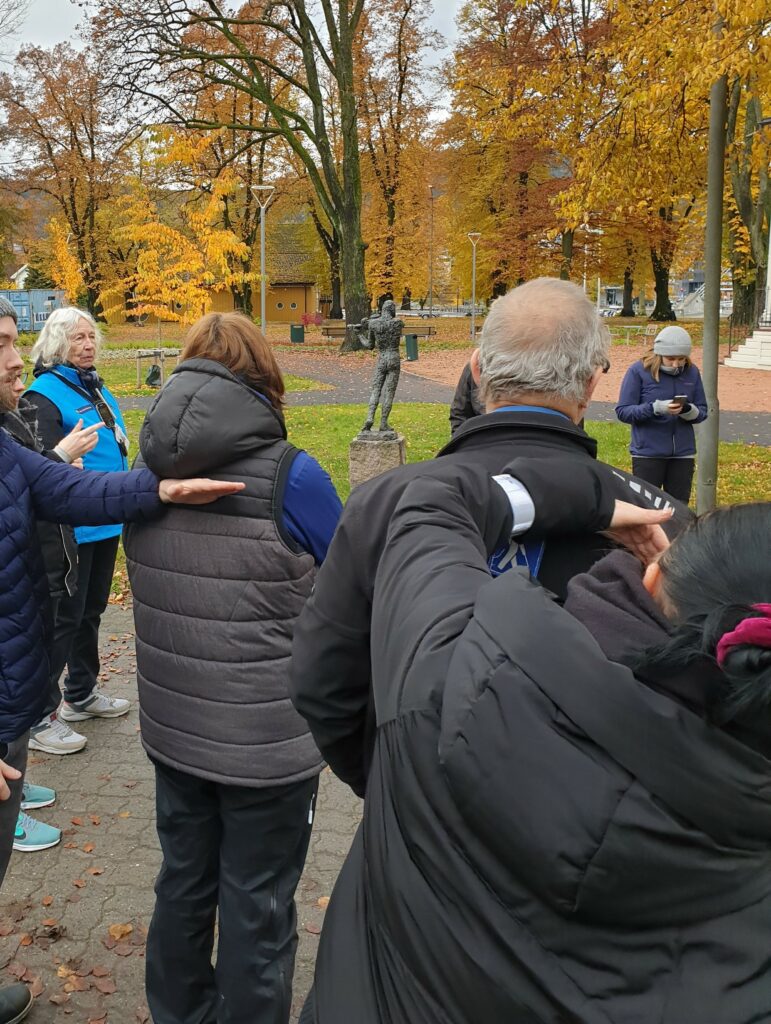
- Making smoothies, including a shopping trip to the store
- Guided city walk in Drammen
- Workshop with production of companion hoop and cube game
- Bus tour and climbing at Klatreverket
- Morning and evening outdoor activities at Eikholt
- Fire drill with theory and practice
- Lecture with Karianne Havsberg on "The road to the New York marathon"
- Bowling game and VR goggles
City walk
The guided city tour lasted several hours, and the participants were captivated by her commitment and enthusiasm for storytelling. The interpreting students got to practise interpreting the content, empathising with the stories, as well as using descriptions and haptic signals to convey the whole story. The cold wind along the river challenged everyone, and there was probably some shivering in the signals.
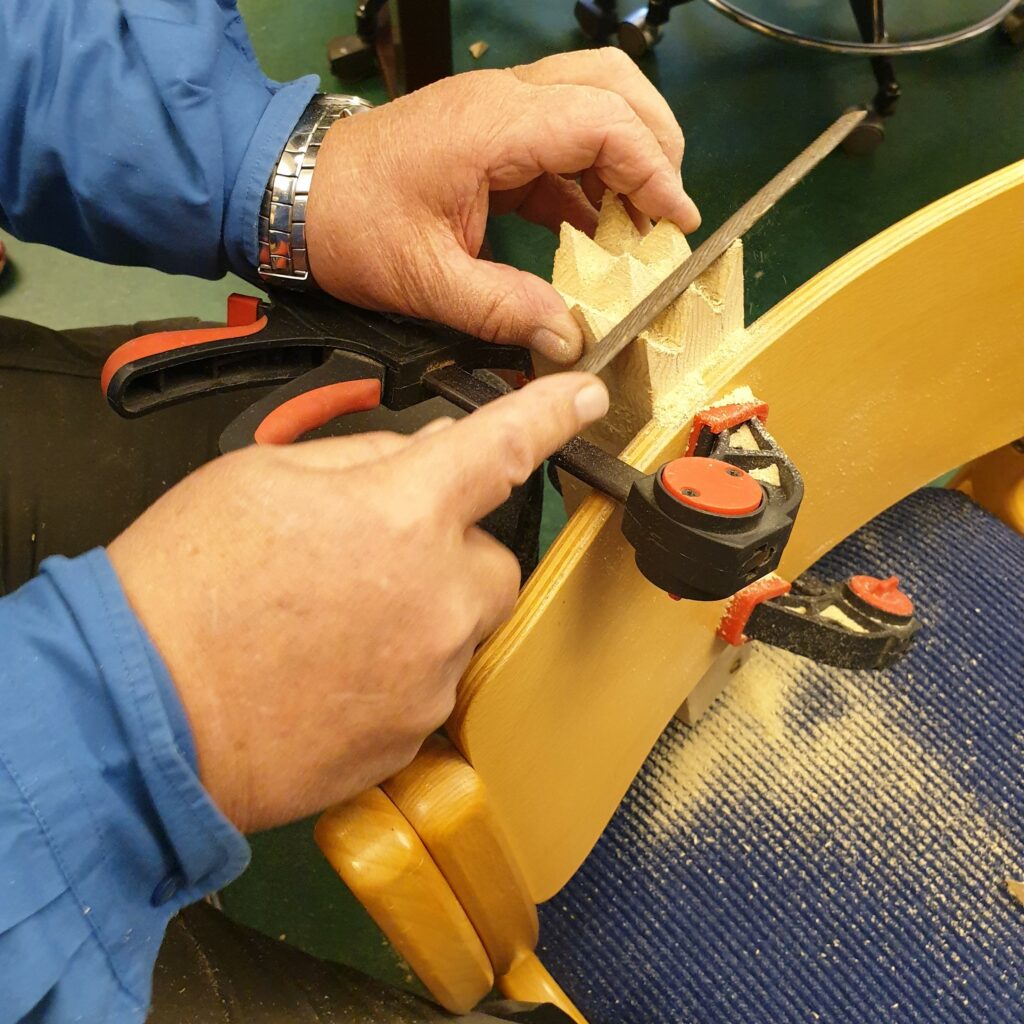
Production of Kubb games
-"It was nice to make the sticks for the Kubb game ourselves. In the evening, we played with the newly made Kubb game and it was fun. My team had backlighting from the lanterns, and it wasn't as easy to hit just with haptic on the back. So we lost and were beaten by the guys who had better light., says one of the female participants with a twinkle in her eye.
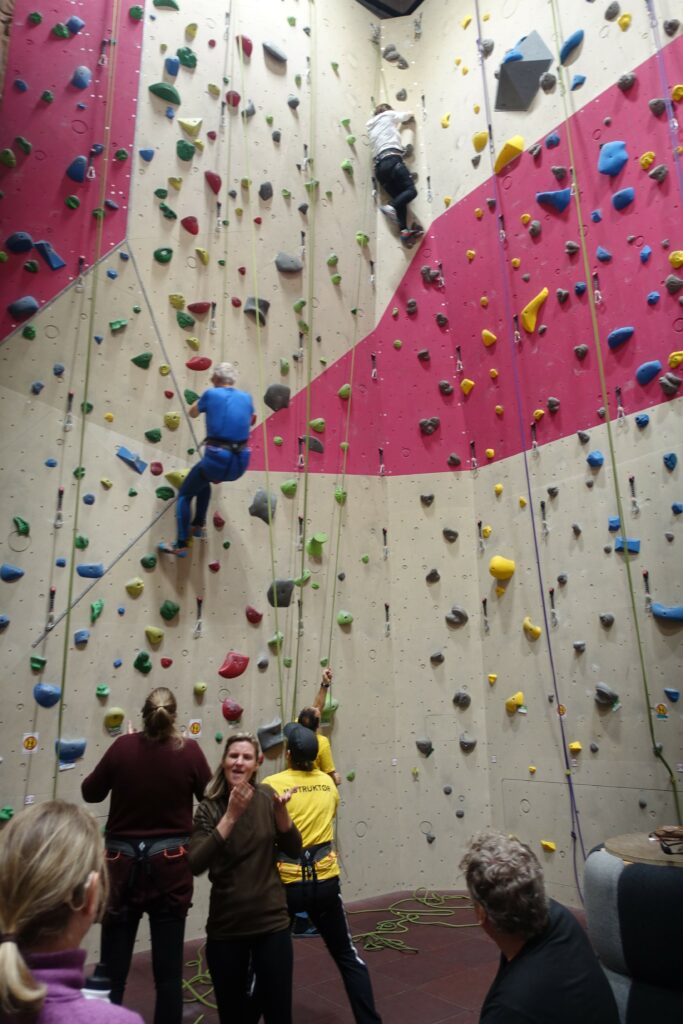
Climbing wall
The atmosphere at Klatreverket these weeks was good, but a little tense. Many different interpretation techniques were in use, ranging from description and speech through a microphone to hearing aids, visual sign language, tactile sign language and haptic signals.
- "I can't believe I made it to the top, first of all! And I didn't really want to climb," said a proud participant who used an app on her phone to get a description from microphone to hearing aid..
- "I had a lump in my stomach and didn't dare climb," said another participant. "But then they pushed so hard that it was better to try. The lump disappeared in the wall and I climbed until I hit my head on the ceiling. That's when I realised I was right at the top! It was a lot of fun.he smiled, threw off his outer jumper and climbed a new route to the top.
In the climbing wall, we could see interpreter student Tina-Yumin and participant Tonje climbing side by side. - I benefited greatly from using a haptic interpreter along the way to save energy and get to the top faster. I don't think I would have made it to the finish line without a haptic interpretersays Tonje. Tina-Yumin provided haptic signals for the direction and height of the next roof, allowing her to climb all the way up the 11 metres to the top. - I think my most important strength when I was interpreting on the climbing wall was that I have previous climbing experience, and that the person I was interpreting for and I had good communication both before and during the climb. Tonje confirms that it was important to prepare together with the interpreter and make several appointments before they started climbing the ladder.
Learning for everyone
-The biggest challenge for me was that I stressed a lot at the beginning because neither of us had done it before, and I wasn't sure how best to describe haptically while we were both up on the climbing wallTina-Yumin remembers afterwards.
Both the interpreter students and the participants have a lot to learn during the weeks. Co-operation and exchange of experience is a big part of the course.
-"The students were interested and skilful, says one of the other participants. "I like to get haptic descriptions, like during the city walk. The students were good at asking how it was best for me to receive the signals. They asked for tips along the way. At the same time, they were very good at helping me learn more tactile sign language, which is quite new to me and I got to practise a lot.
-The most important thing I learnt was that describing concretely and having good communication with the people I interpreted/accompanied for is essential! says Tina-Yumin, who believes that the content of the week is varied enough and provides a broad practice.
Eikholt and interpreting programmes
The interpreter programme for deafblind people started in Norway in the early 1980s, with course weeks at Eikholt, followed by practical training at Activity Weeks. From the mid-1990s, Helsesport became a collaboration between the interpreter programmes and Eikholt and has been arranged here every year since then.
Line Hovland, who has been responsible for Helsesport from 1999 to 2018, says that the participants with deafblindness who take part in the weeks do a super important job. - They allow the students to practice and test themselves in real-life situations, and give feedback when the students ask for it. "At the same time, we try to give the participants the opportunity to try activities that they might not otherwise have tried, breaking barriers that give a sense of mastery., says Line.
During Health Sport Week, the students are closely monitored by their supervisors from Oslo Met, HiST (Trondheim) and HVL (Bergen). The days are long and gruelling, with lots of trial and error and room for refinement and improvement throughout the week.
Cathrine Timm Sundin, communications advisor, who joined as an apprentice last year and is now responsible for Helsesport, has a good grasp of the Helsesport weeks. She herself had an internship week here at Eikholt almost 20 years ago and has gained extensive experience as an interpreter for deafblind people since then.
This content is more than 3 years old and may contain information that is no longer up to date.
Interested in services for people with both visual and hearing impairments?
Read more about Eikholt's services in this link: our services
Do you want to get in touch with Eikholt? You can find contact information here: Contact us
